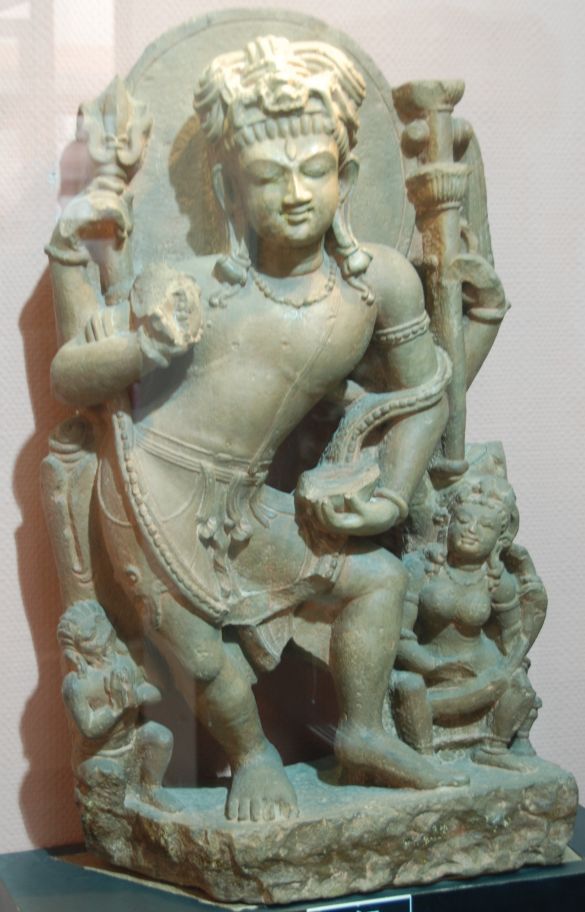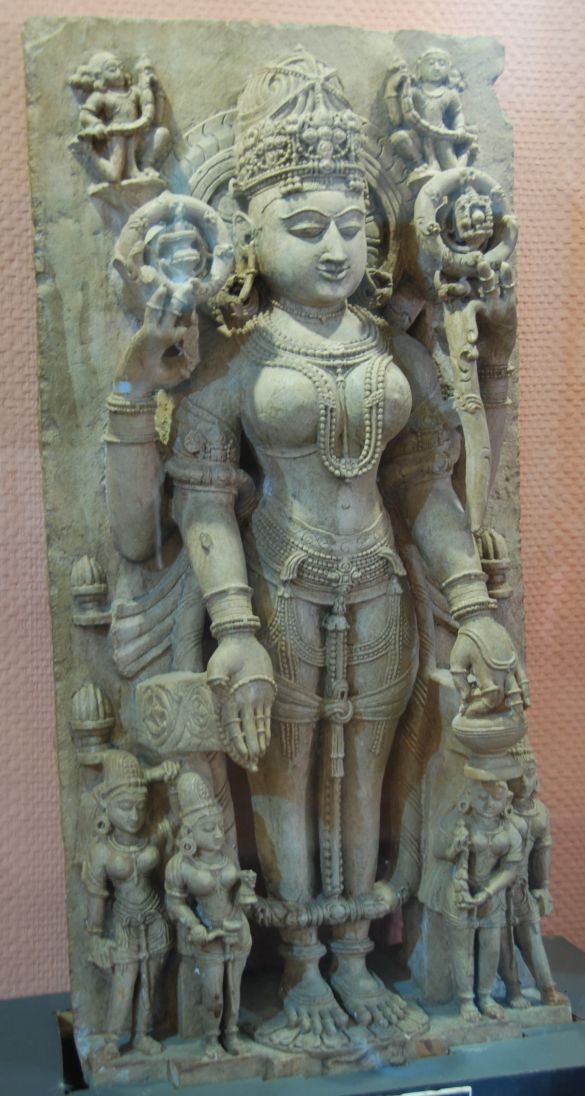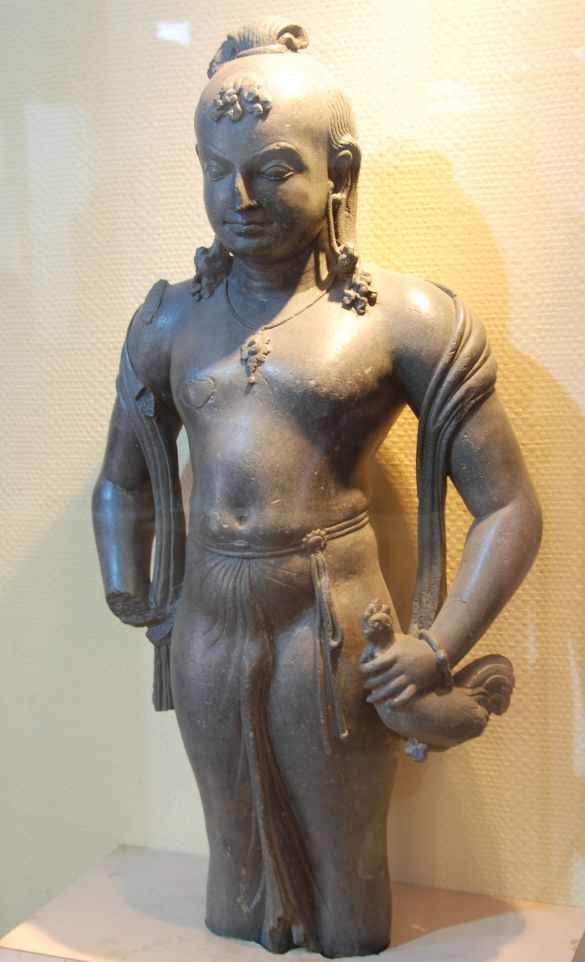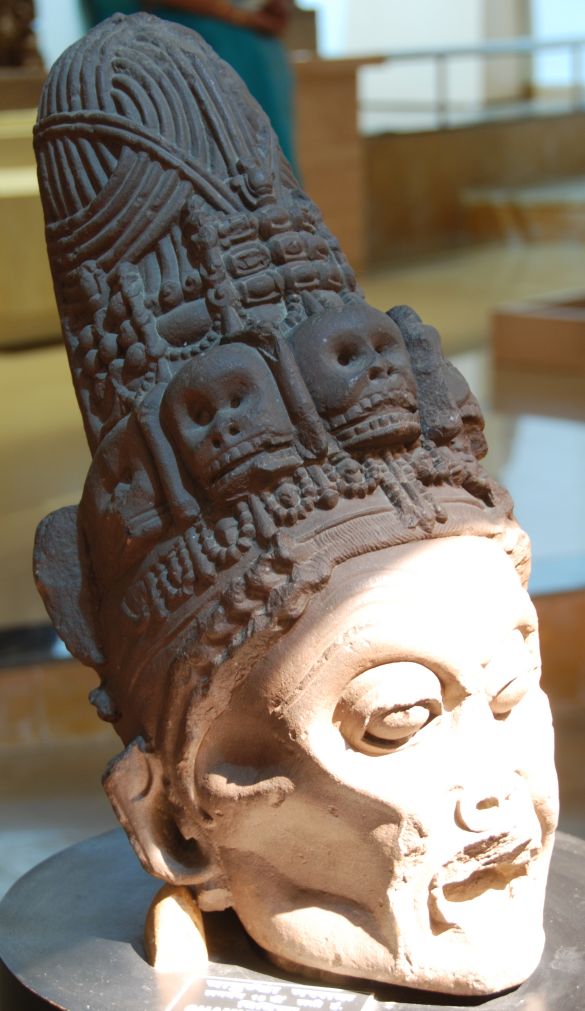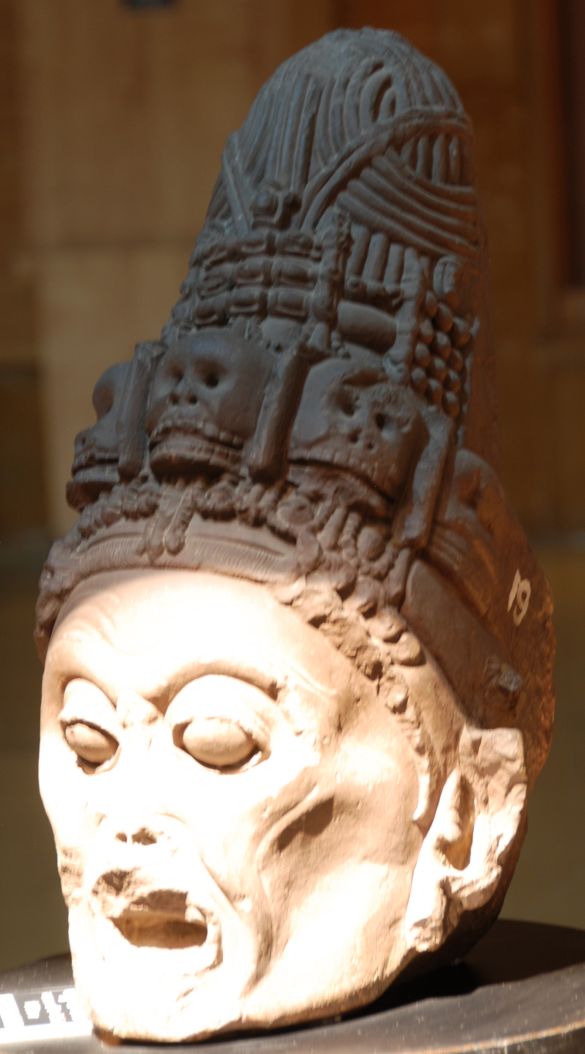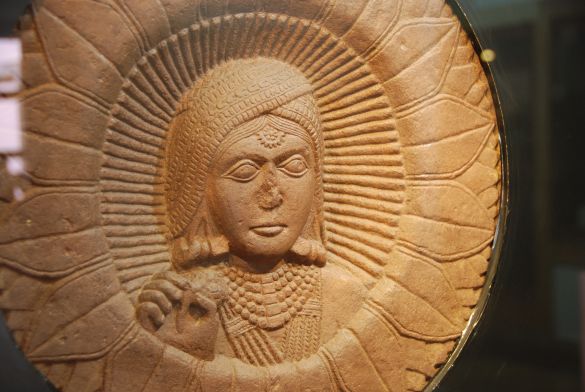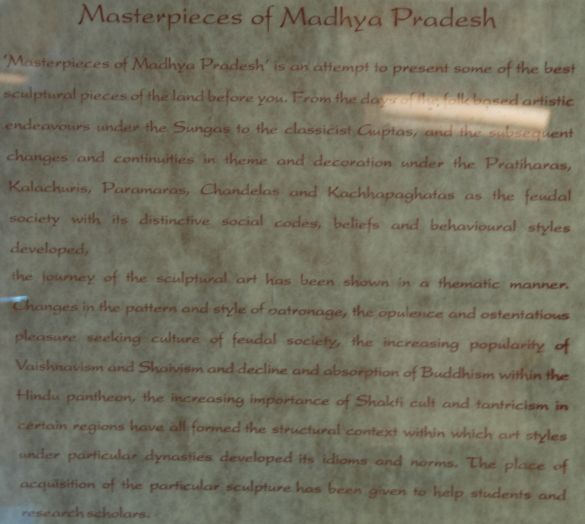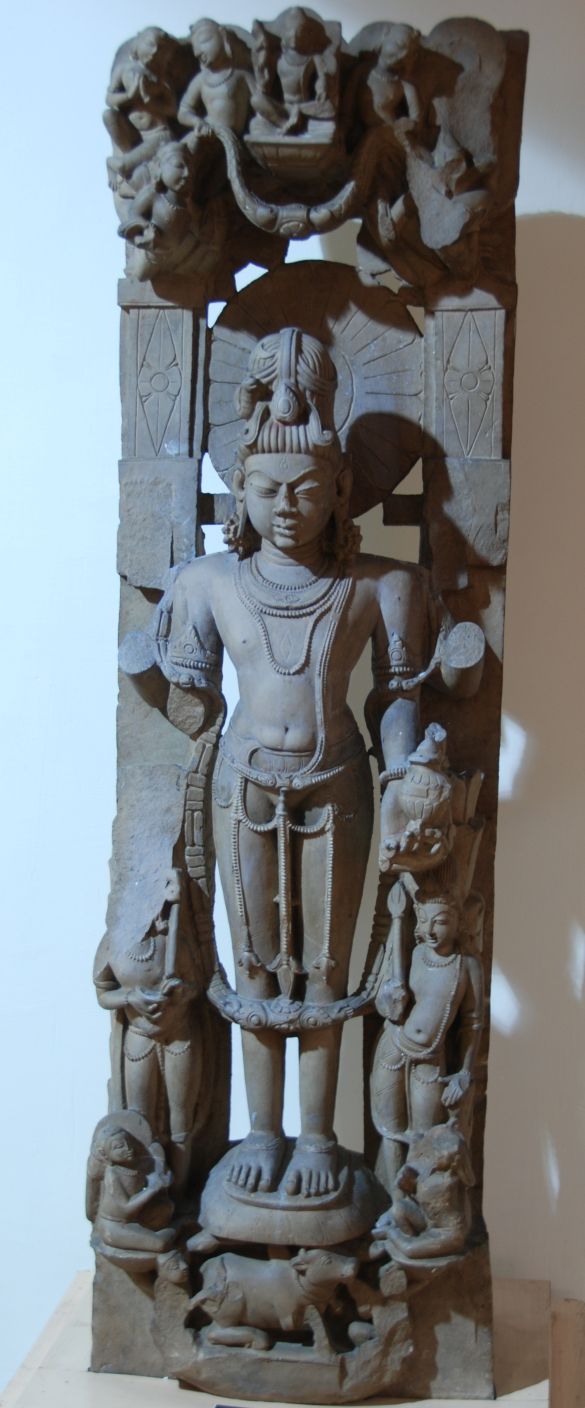Lonely Planet:
This first-class archaeological museum spread over 17 galleries includes some wonderful temple sculptures as well as 87 10th- and 11th-century Jain bronzes unearthed by a surprised farmer in western Madhya Pradesh.
Het museum heeft een hele serie collecties. Een aantal daarvan heb ik bezocht.
Daar heb ik foto’s van gemaakt en een eerste reeks komt vandaag aan bod.
Deze foto’s zijn van hun tentoonstelling:
‘Masterpieces of Madhya Pradesh’.
Natesh. De beelden staan hier bijna allemaal achter glas. Dat maakt het moeilijker voor de fotograaf.
Gauri, 10 century AD, Bhanpura.
Als het me lukt gewef ik een toelichting.
Die toelichting is dan niet van mij maar bijvoorbeeld
van Wikipedia:
Gauri (beter bekend als Parvati) is een Hindoeïstische godin.
Parvati wordt meestal gezien als de belangrijkste hulp,
en echtgenote, van Shiva.
Shiva en Parvati hebben samen twee zoons gekregen, Ganesha en Skanda (Kartikeya).
Zij worden vaak met z’n vieren afgebeeld op de berg Kailash.
Shiva, 5th century AD, Bhatura.
Kartikeya, 3rd – 4th century AD, Gajendraghat (stad in Karnataka).
Wikipedia:
Kartikeya is een god uit de Hindoeïstische mythologie.
Hij is de god van oorlog en overwinning en de patroonheilige van Tamil Nadu.
Hij is de zoon van Parvati en Shiva en de broer van Ganesha.
Ze wonen op de berg Kailash.
Bij dit beeld speelt de lichtinval een spelletje met de toeschouwer. De onderste ‘kop’ ving een straal zonlicht terwijl de rest van het beeld in het licht van de museumverlichting staat. Chamunda head, 10 Century A.D. Vidisha.
Chamunda head, 10 Century A.D. Vidisha.
Trimurti, 10th century AD, Padhawali (Morena).
Yakshi, 2nd century BC, Bharhut.
Wikipedia:
Yakshini (also known as Yakshi) are mythical beings of Hindu, Buddhist, and Jain mythology.
Yakshi is the female counterpart of the male Yaksha,
and they are attendees of Kubera, the Hindu god of wealth
who rules in the mythical Himalayan kingdom of Alaka.
Yakshinis are often depicted as beautiful and voluptuous,
with a chauri (fly-whisk) in right hand, fleshy cheeks,
with wide hips, narrow waists, broad shoulders,
knotted hair and exaggerated, spherical breasts.
Varahi, 3rd – 4th century AD, Hinglajgarh.
Nravaraha (incarnation of Vishnu), 9th – 10th century AD, Kanvla.
Masterpieces of Madhya Pradesh
‘Masterpieces of Madhya Pradesh’ is an attempt to present some of the best sculptural pieces of the land before you. From the days of the folk based artistic endeavours under the Sungas to the classicist Guptas, and the subsequent
changes and continuities in theme and decoration under the Prathiharas, Kalachuris, Paramaras, Chandelas and Kachhapaghatas as the feudal society with its distinctive social codes, beliefs and behavioural styles developed,
the journey of the sculptural art has been shown in a thematic manner.
Changes in the pattern and style of patronage, the opulence and ostentatious pleasure seeking culture of feudal society, the increasing popularity of Vaishnavism and Shaivism and decline and absorption of Buddhism within the Hindu pantheon, the increasing importance of Shakti cult and tantricism in certain regions have all formed the structural context within which art styles under particular dynasties developed its idioms and norms. The place of acquisition of the particular sculpture has been given to help students and
research scholars.
Shiva, 10th century AD, Barhad.
Kuber, 12th century AD, Hinglajgarh.

